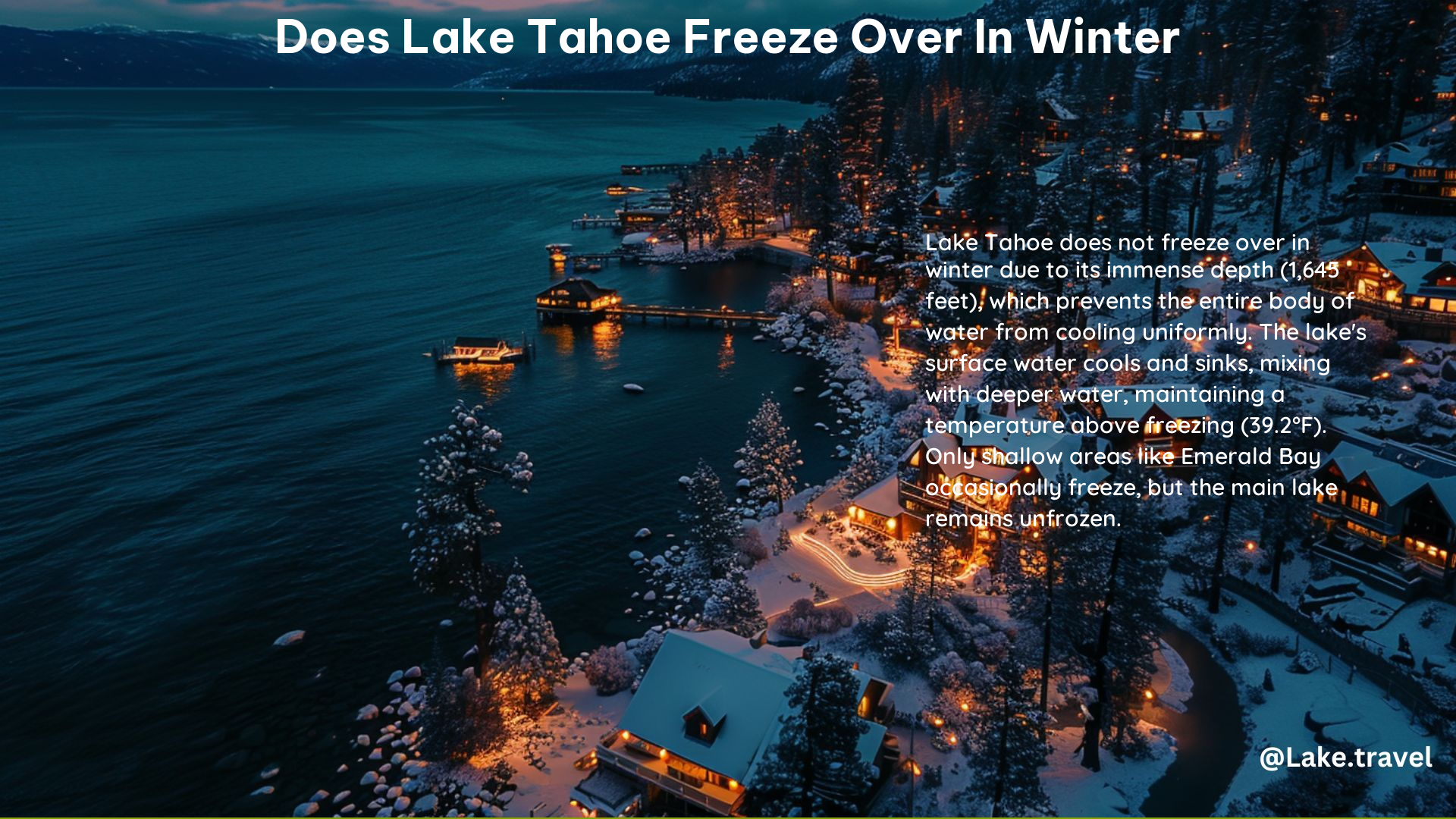Lake Tahoe, a renowned alpine lake straddling the border between California and Nevada, is a popular destination for outdoor enthusiasts year-round. However, during the winter months, many visitors wonder if this vast body of water freezes over, making it inaccessible or unsafe for various activities. In this blog post, we’ll explore the reasons why Lake Tahoe does not completely freeze over in the winter and provide insights into the lake’s unique characteristics.
The Depth Factor
One of the primary reasons why Lake Tahoe does not freeze over in the winter is its remarkable depth. With a maximum depth of 1,645 feet, Lake Tahoe is the second-deepest lake in the United States, surpassed only by Crater Lake in Oregon. This immense depth means that the lake has a massive thermal inertia, making it incredibly difficult to change the temperature of the entire body of water.
Moderate Winter Temperatures

The surrounding area of Lake Tahoe does not experience extreme winter lows, with average surface water temperatures in the winter typically hovering around 41°F (5°C). This temperature is above the freezing point of water, which is 32°F (0°C), preventing the lake from completely freezing over.
Thermocline Mixing
During the warmer months, Lake Tahoe develops distinct temperature layers, known as a thermocline. As the temperature drops in the winter, the top layer of the lake cools, becomes denser, and sinks, causing the lake to mix. This mixing process prevents the surface temperature from reaching the freezing point, as the warmer water from the lower layers is constantly being circulated.
The Influence of Wind
The strong winds that are common in the Lake Tahoe region play a significant role in keeping the lake from freezing over. These winds help to move the water around, making it difficult for the surface to reach the freezing point.
Freshwater Inflow
The constant influx of freshwater from streams and underwater springs that feed into Lake Tahoe helps to maintain the lake’s liquid state. This freshwater inflow prevents the entire body of water from cooling uniformly and reaching the freezing point.
Geothermal Activity
The presence of geothermal activity in the region, manifested in hot springs along the lake’s edge, contributes to warming the water slightly, offsetting the cooling effects of winter temperatures and further preventing the lake from freezing over.
Partial Ice Formation
While Lake Tahoe does not completely freeze over, it is not uncommon for some ice to form along the edges of the lake during especially cold winters. This ice formation is typically limited to the shallower areas near the shoreline and does not affect the majority of the lake’s surface.
Recreational Activities in Winter
Despite the lack of a complete freeze-over, Lake Tahoe remains a popular destination for winter activities. Visitors can enjoy a variety of outdoor pursuits, such as skiing, snowboarding, snowshoeing, and hiking, while taking in the stunning views of the partially frozen lake and the surrounding snow-capped mountains.
Conclusion
In conclusion, Lake Tahoe’s unique characteristics, including its remarkable depth, moderate winter temperatures, thermocline mixing, wind patterns, freshwater inflow, and geothermal activity, all contribute to the fact that this iconic alpine lake does not completely freeze over in the winter. While some ice may form along the edges, the majority of the lake remains in a liquid state, allowing visitors to enjoy a wide range of outdoor activities throughout the colder months.
Reference:
– Lake Tahoe Facts and Information
– Why Doesn’t Lake Tahoe Freeze Over in Winter?
– The Science Behind Lake Tahoe’s Unfreezing
